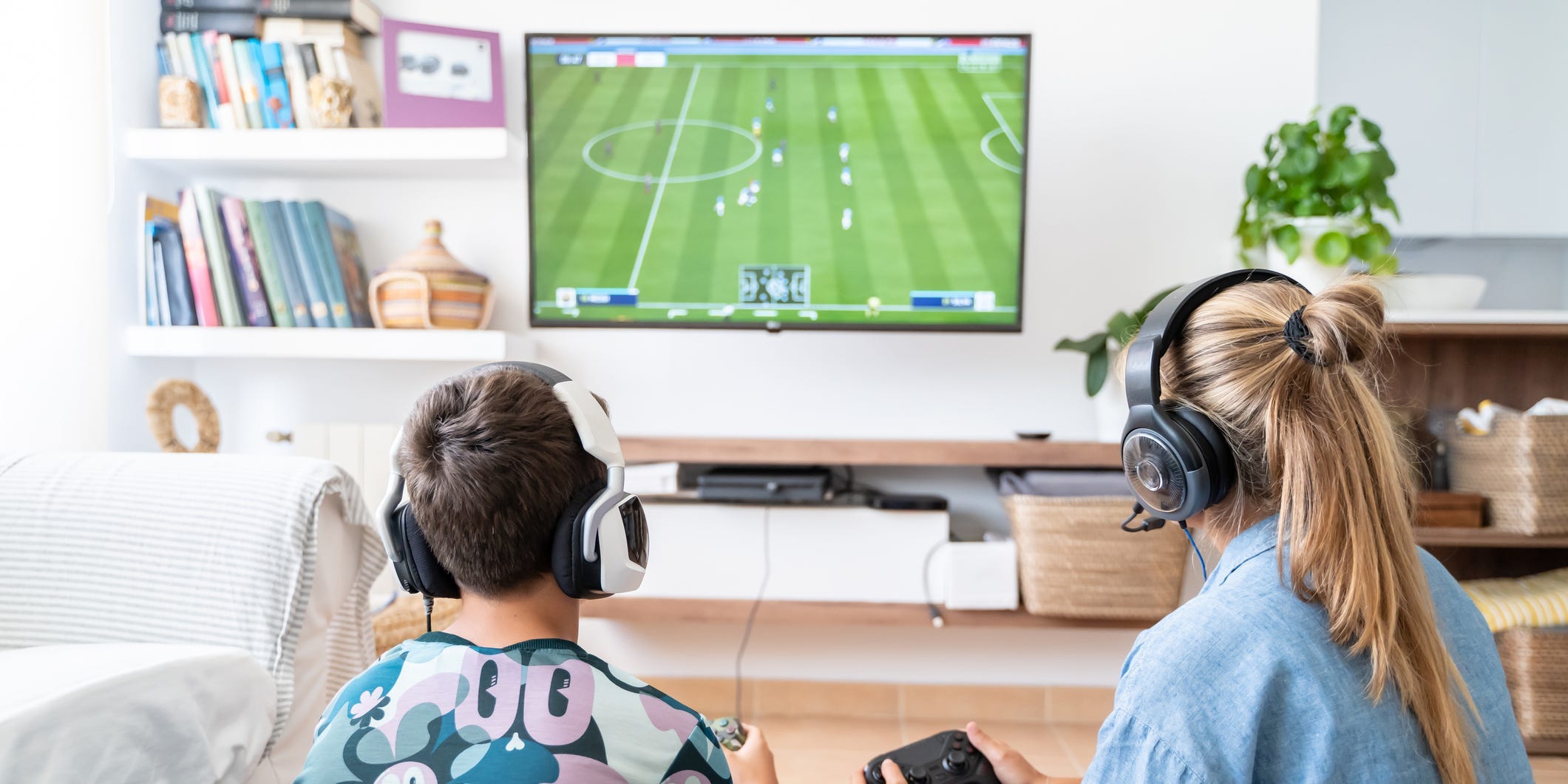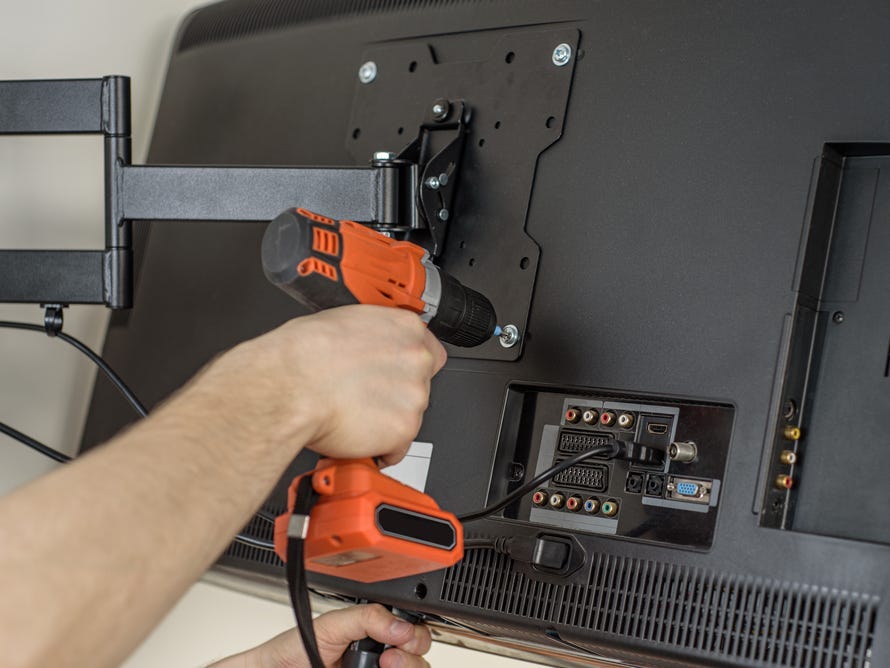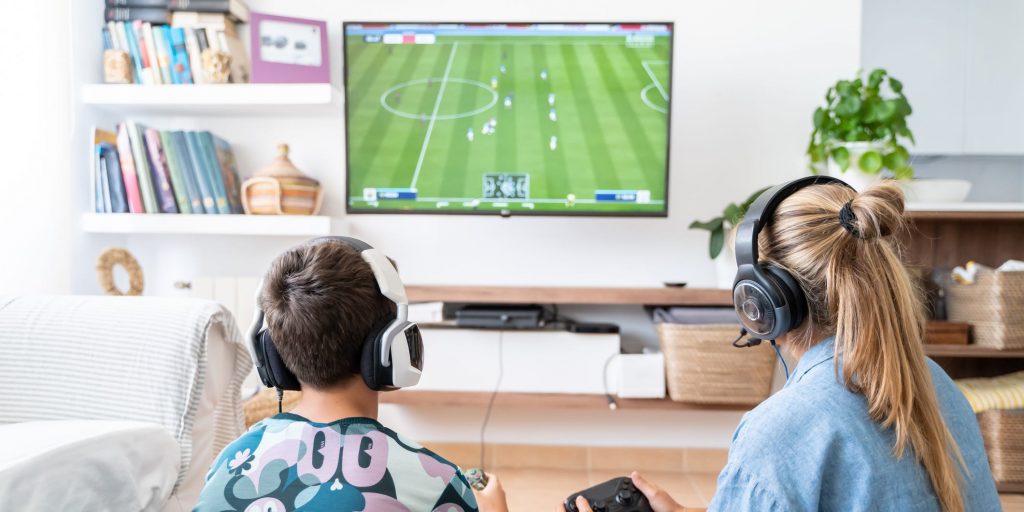
Carles Navarro Parcerisas/Getty Images
- TVs and TV mounts use the VESA standard, match the numbers to find a mount that fits.
- Never mount a TV to drywall only, and always use the studs inside the wall.
- The TV and mount can be heavy, so it might be a good idea to have an extra set of hands to help.
- Visit Insider's Home & Kitchen Reference library for more stories.
Mounting a TV to the wall can offer a subtle, yet effective way of elevating and decluttering an entertaining space without having to make many permanent changes.
"When our clients are purchasing a TV, we often hear that they want to minimize clutter so the space is as clean as possible," says Darius Jackson, senior in-home design agent for Best Buy. "Mounting a TV to a wall can help save space in a room, and create a more professional and welcoming appearance."
Although the idea of mounting a TV on the wall may seem daunting, with a few basic tools, a compatible wall mount, and a friend to help lift up the TV, it's not too hard to do.
Before you begin

Alexander Penyushkin/Shutterstock
Before you start drilling holes in the wall, there are a few key things you need to know that will help tell you how and what to use to mount a TV.
- Know what size you need: All TVs and mounts use the VESA standard, which standardizes the hole pattern on the back of the TV used to bolt the mount frame to the TV. Consult the TV owner's manual (available online) to get the exact VESA size needed. VESA sizes are always two numbers (200 x 200, 400 x 400, 400 x 600) and the larger the TV, the larger the numbers.
- Identify the wall type: Most walls are drywall, which is backed by wood or metal vertical studs. The TV cannot be mounted to the drywall alone - it must be secured into the studs. If your wall is brick or cinder block, you'll need masonry anchors. Some older homes have plaster walls, which sometimes do not have studs. For these walls, you'll need toggle bolts and toggle anchors.
- Picking the right TV mount: TV mounts come in different styles, and which one you pick depends on what's best for your space. Fixed mounts simply mount the TV to the wall with no movement. Swivel or tilting mounts allow the TV to be adjusted vertically or horizontally, and full-motion mounts enable the TV to be extended out from the wall and moved around in any direction. If your space requires your TV to have a bit more mobility for people to watch, then a swivel, tilting, or full-motion mount might be best.
- Determine where you want to mount your TV: Consider how you like to watch TV to select the best place. Keep in mind the location of the closest electrical outlet and the studs inside the wall. The holes on the TV mount template must be placed over the centers of the studs, so this will also dictate where the TV can be mounted.
Insider's takeaway
With the proper tools, a friend to help, and the instructions that come with a TV mount, you too can mount a TV on the wall. Make sure the mount and TV are compatible by matching the VESA numbers. Always measure twice before drilling holes and always remember the TV can never be just mounted to the drywall, it needs to be secured to the studs inside the wall. If the studs aren't exactly where you want the TV to go, simply offset the mount using the paper template that comes with the mounting bracket.
Because of the weight of a wall-mounted TV, and the danger to pets and people should it fall, correct mounting is critical. If you have any doubts about any part of the process or your ability to follow the directions included with the TV mount exactly, call a professional.
